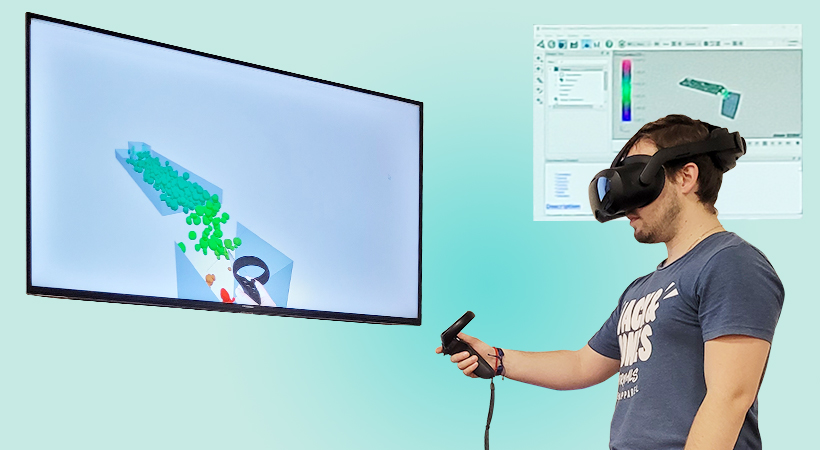

Welcome to TechViz’s dedicated page for the Pharmaceutical industry. Unlike other sectors who took to virtual reality like a duck to water, the pharmaceutical industry is slowly adopting the new technology. But even if it is still at the early stages of integrating augmented and virtual technologies, pharma companies have many applications for VR.
Nowadays, drug research is very dependent on 3D modelling, as it enables to fully visualize new molecules. With VR, they can immerse themselves in their data, and get more accurate representations of which molecule affects the disease target, and run real-time simulations for prediction studies.
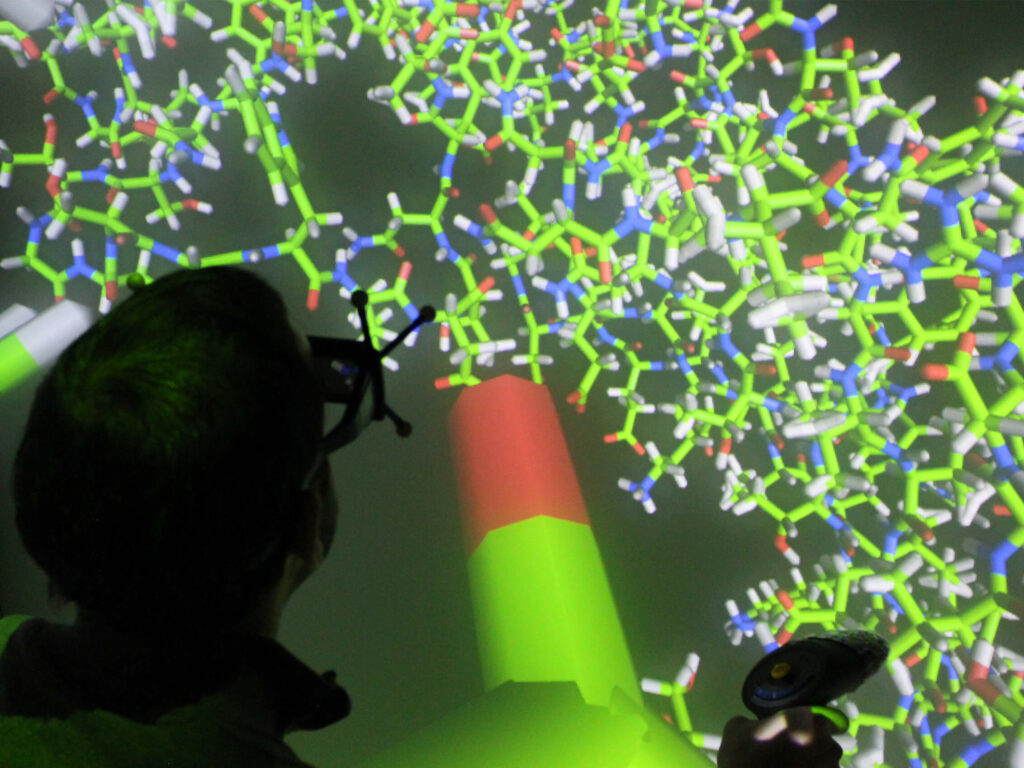
VR simulations help in the process of reverse-engineering a biological system, like bacteria or viruses, or delve into areas we don’t fully understand. Once the simulation is created, it can serve as a hypothesis generator. It accelerates the pre-develop phases for creating new drugs, with the visualization the interactions between molecules better. Plus, it can help predict the interaction between different chemicals, and predict the interaction between the drug and their target. Finally, by scanning different potential drugs, VR simulations provide a theoretical framework with a real-like environment that can be used for developing new drugs, studying their impacts, and help for drug repurposing.
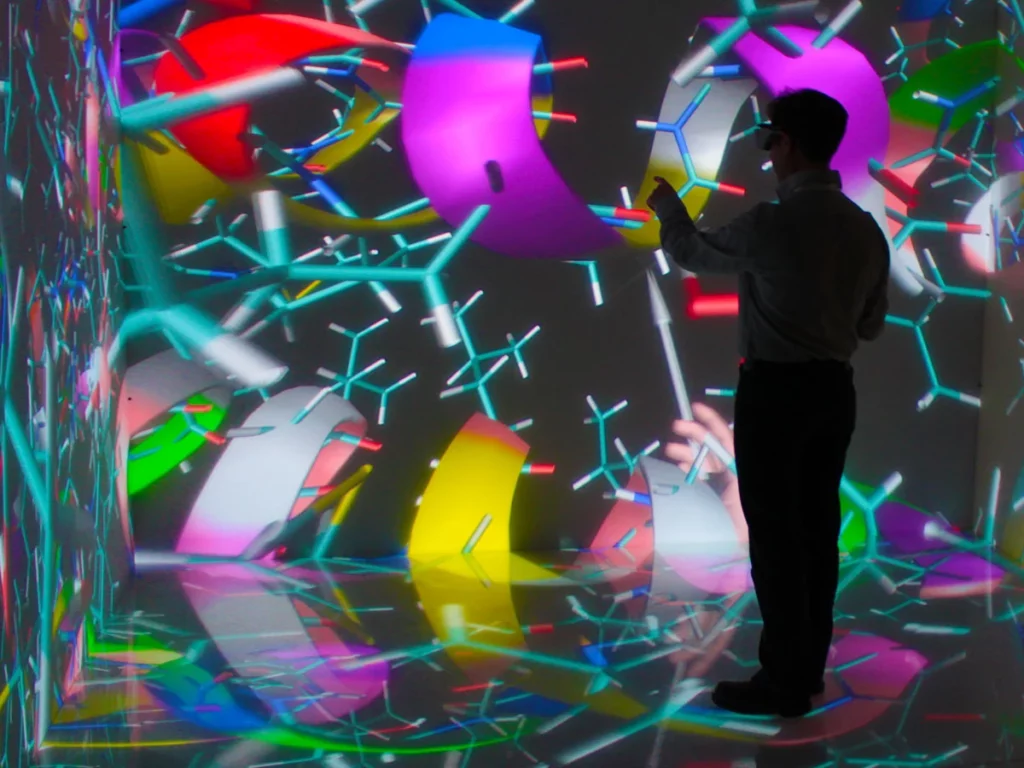
When it comes to the manufacturing phase of drugs, VR will help at different levels. As it requires very specialized equipment to create the final products, virtual reality trains specialized workers to operate the machines. It will ensure that there are no mistakes done during the real production. Plus, the more the technicians will train in VR, the more the operations will improve, so VR training as a high return on investment.
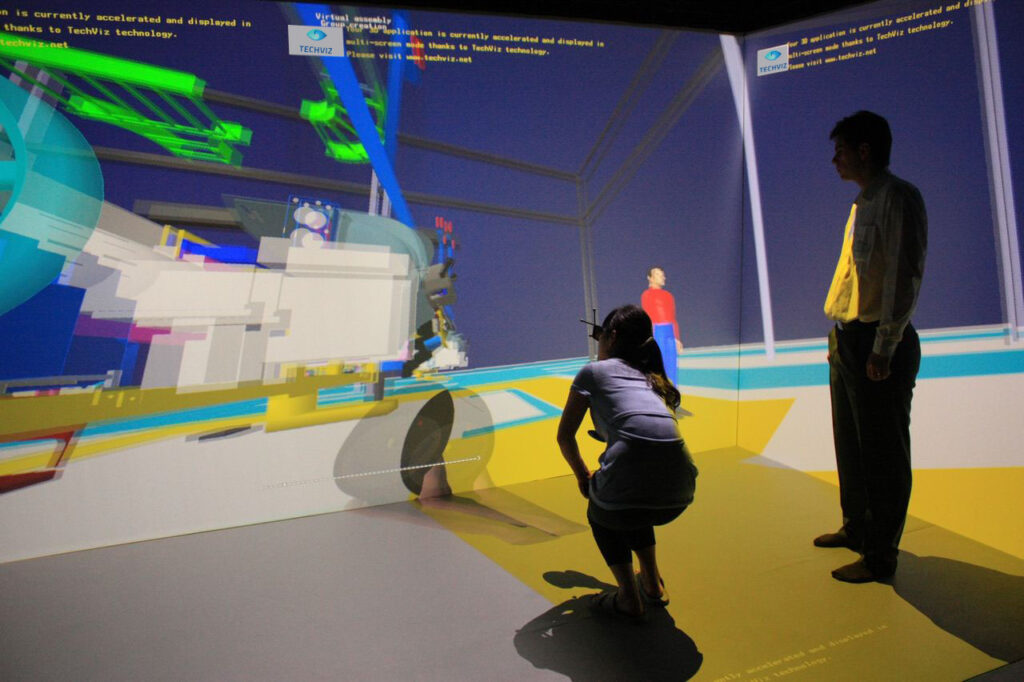
Use VR to visualize pharmaceutical plants and cleanrooms at full scale before construction or modification. Engineers and compliance teams can collaborate on layouts, identify ergonomic or safety issues, and validate GMP (Good Manufacturing Practice) workflows early in the design process.

Immerse research teams in complex molecular structures and biochemical interactions directly from dedicated software. Visualizing molecules in 3D helps scientists better understand binding sites, optimize molecular design, and accelerate the drug discovery process.
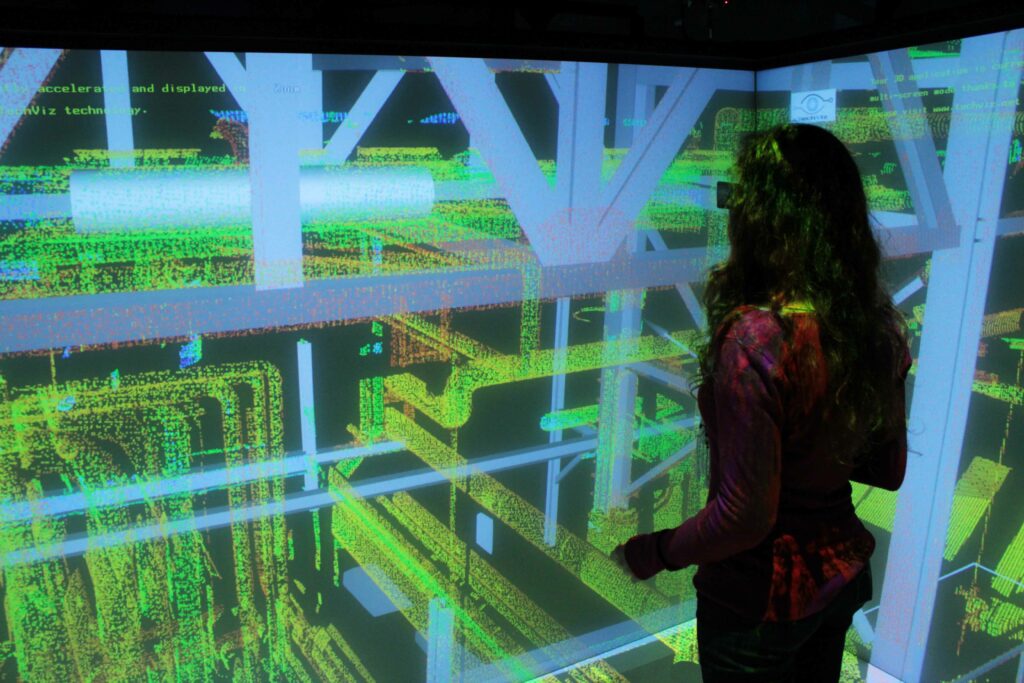
Train lab technicians and manufacturing operators on complex production lines or specialized equipment in a risk-free virtual environment. VR sessions reduce human errors, improve procedural accuracy, and shorten the learning curve before working with sensitive or costly materials.

Recreate hazardous scenarios such as chemical spills or contamination risks in virtual reality to train personnel on emergency procedures. This allows for repetitive, immersive practice that strengthens safety culture and ensures compliance with strict regulatory standards.
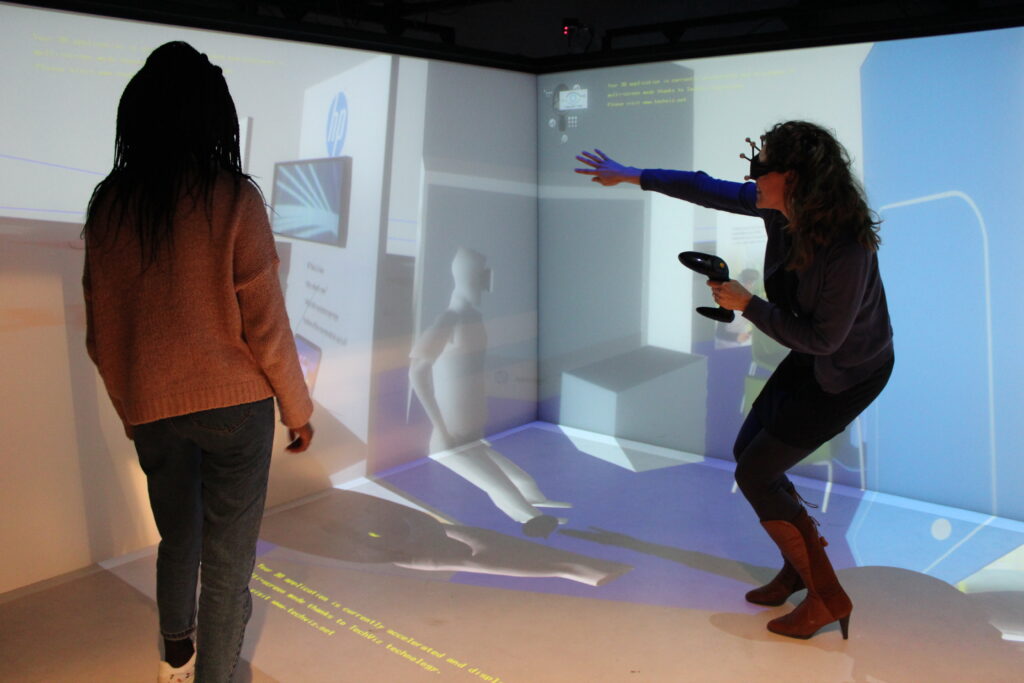
Enable R&D, quality control, and production teams to review 3D data together in real time, even when located in different facilities. TechViz allows experts to connect through VR and analyze molecular models, equipment designs, or production workflows collaboratively, reducing travel costs and accelerating decision-making.
Virtual reality is opening new horizons for the pharmaceutical industry, from research and design to production and training. By using TechViz, companies can transform complex scientific data into immersive, interactive experiences that accelerate innovation, improve safety, and optimize processes. As VR technologies become more accessible, forward-thinking pharma leaders can already leverage them to enhance collaboration, reduce costs, and bring life-saving treatments to market faster.
